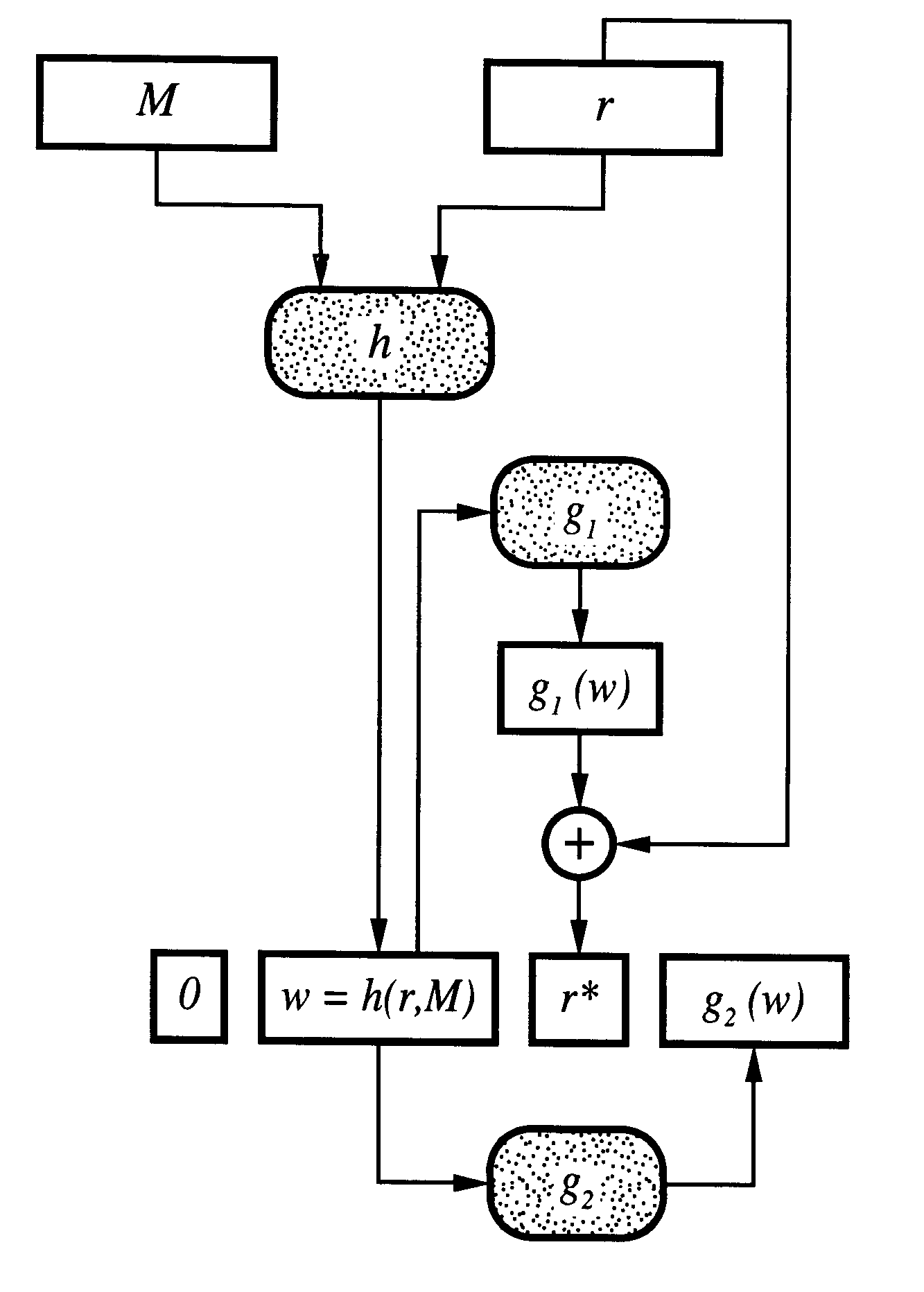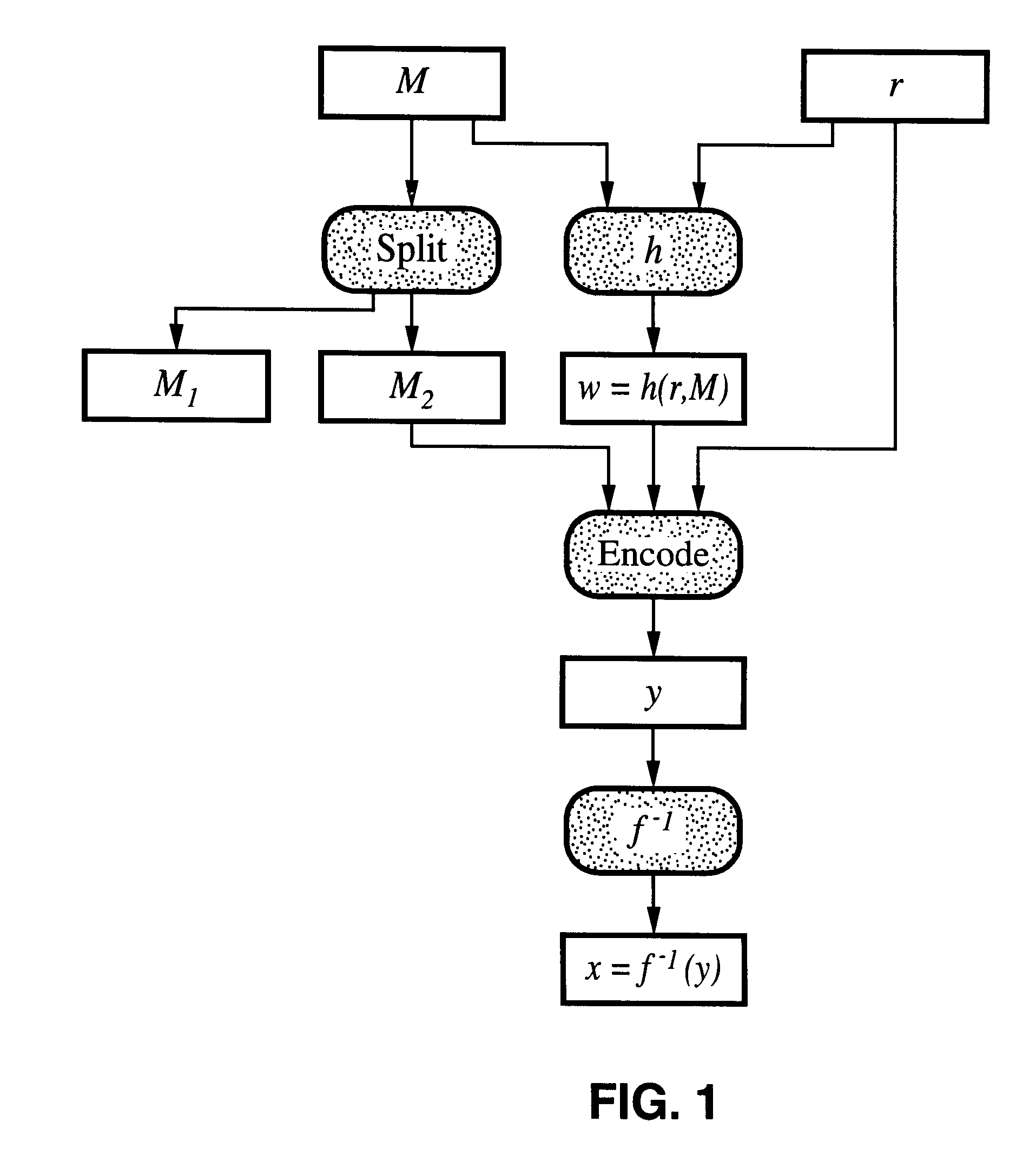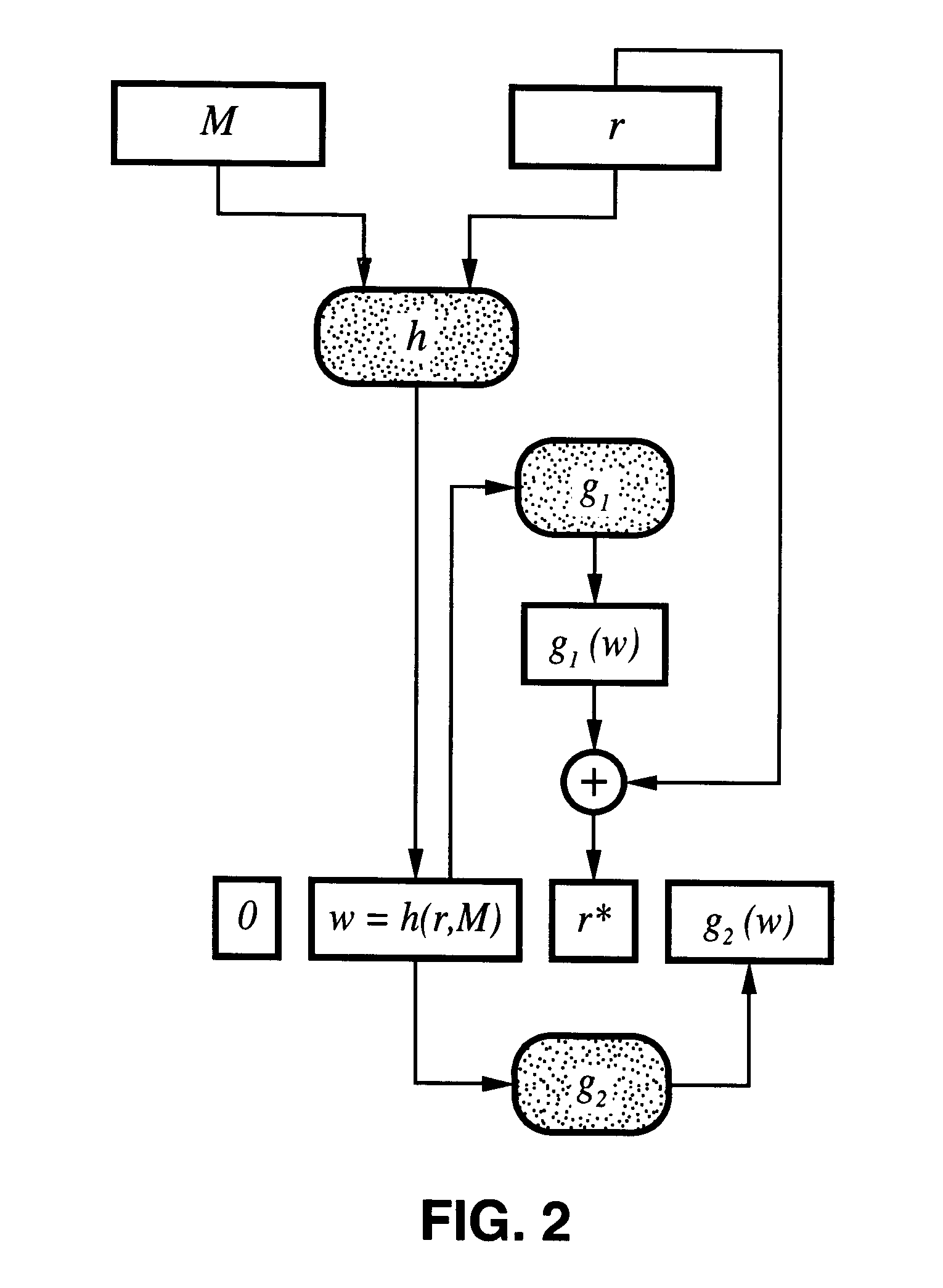Probabilistic signature scheme
a proof-based, signature scheme technology, applied in the field of digital signature schemes, can solve the problems of inability to justify the security of the iso standard, and the inability to demonstrate the security of the current pkcs standard,
- Summary
- Abstract
- Description
- Claims
- Application Information
AI Technical Summary
Benefits of technology
Problems solved by technology
Method used
Image
Examples
Embodiment Construction
By way of brief background, it is known that RSA is a family of trapdoor permutations. It is specified by the RSA generator, RSA, which, on input k, picks a pair of random distinct (k / 2)-bit primes and multiplies them to produce a modulus N. It also picks, at random, an encryption exponent e.epsilon.Z.sub..phi.(N) * and computes the corresponding decryption exponent d so that ed.ident.1 mod .phi.(N). The RSA generator returns N, e, d, these values specifying f: Z.sub.N *.fwdarw.Z.sub.N * and f.sup.-1 : Z.sub.N *.fwdarw.Z.sub.N *, which are defined by f(x)=x.sup.e mod N and f.sup.-1 (y)=y.sup.d mod N. Both functions are permutations, and, as the notation indicates, inverses of each other. The function f is the RSA encryption primitive and the function f.sup.-1 is the RSA decryption primitive.
The trapdoor permutation generator RSA-3 is identical to RSA except that the encryption exponent e is fixed to be 3. More generally, RSA-e provides an encryption exponent of the specified constan...
PUM
 Login to View More
Login to View More Abstract
Description
Claims
Application Information
 Login to View More
Login to View More - R&D
- Intellectual Property
- Life Sciences
- Materials
- Tech Scout
- Unparalleled Data Quality
- Higher Quality Content
- 60% Fewer Hallucinations
Browse by: Latest US Patents, China's latest patents, Technical Efficacy Thesaurus, Application Domain, Technology Topic, Popular Technical Reports.
© 2025 PatSnap. All rights reserved.Legal|Privacy policy|Modern Slavery Act Transparency Statement|Sitemap|About US| Contact US: help@patsnap.com



